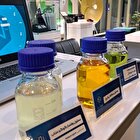How Giant Tarp over Cow Manure Cuts Methane by 80%

A large, balloon-like tarp covers a manure lagoon on a Central Valley dairy farm, marking a quiet but important change. Instead of escaping into the atmosphere, methane—a powerful climate-warming gas—is now being captured and cleaned, the journal GCB Bioenergy reported.
Researchers at the University of California, Riverside have released a new study demonstrating how effective dairy digesters can be. These sealed manure ponds are designed to collect and repurpose the methane they generate. According to the study, the systems can cut methane emissions by about 80 percent, closely aligning with the estimates used in California’s climate planning.
The findings, published in Global Change Biology Bioenergy, come at a time when California is increasing its investment in methane control technologies to meet its goal of reducing emissions to 40 percent below 2013 levels by the end of the decade. More than 130 of these systems are already in use on dairies across the state, but this study is the first to verify their real-world performance with such thorough analysis.
“The digesters can leak, and they sometimes do,” said Francesca Hopkins, a climate scientist at UCR who led the research. “But when the system is built well and managed carefully, the emissions really drop. That’s what we saw here.”
The team focused on a family-run dairy farm in Tulare County, a hot and dry area in the San Joaquin Valley that produces more milk than any other county in the country. For one year before and one year after the digester system was installed in 2021, the researchers collected hundreds of data points using a van outfitted with precision gas sensors to take mobile atmospheric measurements around the farm.
Methane is more than 80 times as powerful as carbon dioxide at warming the atmosphere over a 20-year period. In California, a large share of methane emissions comes from dairy cows. The gas is released not only through their burps after eating, but also from how their manure is stored. When manure sits in open, water-filled pits, it breaks down without oxygen and releases methane into the air.
Covering those pits with gas-tight membranes allows the gas to be trapped, cleaned, and piped into fuel systems that often replace diesel in long-haul trucks. At the Tulare County site, researchers initially found some leaks in the system. Working with the digester operator, California Bioenergy, the team flagged the problems. Adjustments were made. The methane reductions followed.
“This was a textbook case of adaptive management,” Hopkins said. “The partnership between scientists, the company, and the farmer really made a huge difference.”
While the study affirms the potential of dairy digesters, it also acknowledges their limitations. They do not address other emissions common to dairy operations, such as ammonia or airborne particles that affect local air quality. Building the digesters is also no small task. It requires permits, capital investment, and long-term maintenance.
“They’re not for every farm,” Hopkins said. “But for dairies that can make it work, this is one of the most cost-effective ways we have to cut these greenhouse gas emissions.”
California is also expanding its monitoring capacity with satellite technology that can detect large methane leaks from space. State regulators can follow up with site operators when emissions spikes are detected.
Hopkins views the effort as a model for how climate policy, science, and industry can align when conditions are right. “There’s so much division in the climate space,” she said. “But this is a real example of cooperation that leads to measurable results.”
4155/v





















